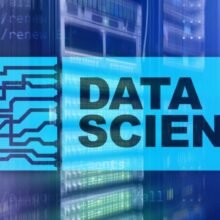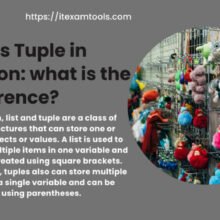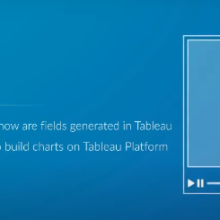Accelerate your data science career with Fractal’s certification! Gain job-ready AI, analytics, and machine learning skills to land top roles. Start today!
How HADOOP is useful to data scientists

Hadoop allows the users to store all forms of data, and provides massive storage for any kind of data. It can handle a large amount of tasks, but here the question is how hadoop it useful to data scientists.
We can say in one sentence that Hadoop is a must for Data Scientists.
The main functionality of Hadoop is storage of Big Data.
It also allows the users to store all forms of data, that is, both structured data and unstructured data.
Hadoop also provides modules like Pig and Hive for analysis of large scale data.
Now, I will not say Hadoop is necessary to become a Data Scientist, but a data scientist must know how to get the data out in the first place to do analysis.
Hadoop is exactly the technology that stores large volumes of data, where a data scientist can work on.
now, let us see how HADOOP is useful to data scientists.
What do you need to learn to imply HADOOP to data science?
- You need to learn to be able to develop a real-world an end to end application that will encompass both Hadoop as well as Natural Language Processing (Data Science).
2. Develop distributed applications based on Hadoop Framework, Different Hadoop pillars, HDFS Architecture, MapReduce, and different types of Data in Hadoop.
3. Design and Develop scalable, fault tolerant and flexible applications which can store and distribute large data sets across inexpensive servers.
4. Understand the different building blocks of Apache NIFI helping in data movement, transformation, etc. Also, learn about NIFI Architecture and its various applications.
5. Develop a complete workflow application in NIFI which can take data from the streaming source, perform transformations on this data and then store it in Hadoop.
6. Understand the architecture and concepts related to Apache Solr as well as several of its features.
7. Visualize where does Hive fit in Hadoop Ecosystem, its Architecture as well as how exactly it works.
8. Develop and Visualize the data in the form of Graphs, Histograms, Pie Charts, etc. using another Hadoop Ecosystem tool (notebook) called Apache Zeppelin.
9. Develop basic building blocks of Natural Language Processing and write associated python scripts.
10. Setup a Hadoop Cluster on your laptop free of cost and then connect to different hadoop services.
11. Visualize Hadoop ecosystem services as well as components like Memory usage, Cluster Load, etc. in the form of a dashboard on a Web Interface called Ambari.
12. Develop scripts based on several commands in Hadoop to manage files and datasets.
13. Steps to Install Apache NIFI and making changes in configuration files to run it seamlessly.
14. Spin up Apache Solr is one of the services, configure it to receive streaming data from the NIFI processor to perform real-time analytics on this data.
15. Create a Banana Dashboard to visualize the real-time analytics.
happening on live streaming data after getting an understanding of the components and structure of the Banana Dashboard.
16. Develop an understanding of how data can be stored in a structured form in Apache Hive. In-depth knowledge of several of its components.
17. Develop the concepts of Natural Language Processing and integrate them all to develop a working NLP application.
18. Build a machine learning model using Python for the application going to be built.
above all the learning gives you a clear message that HADOOP is useful to data scientists
Tools for Data Science course from Coursera
5- star course Offered by IBM
Is there any course that covers all the topics Listed above?
YES there is .
check out the following course from UDEMY. it has all the things that you want to learn.
Hadoop & Data Science NLP (All in One Course).

This course is designed in such a way that you will get an understanding of the best of both worlds.
i.e. both Hadoop as well as Data Science.
What more about the Data science with hadoop course ?
You will not only be able to perform Hadoop-related operations to gather data from the source directly.
But, also they can perform Data Science specific tasks and build the model on the data collected.
Also, you will be able to do transformations using Hadoop Ecosystem tools.
So, in a nutshell, this course will help the students to learn both Hadoop and Data Science Natural Language Processing in one course.
And, Companies like Google, Amazon, Facebook, eBay, LinkedIn, Twitter, and Yahoo!
They are using Hadoop on a larger scale these days and more and more companies have already started adopting these digital technologies.
So, If we talk about Text Analytics, there are several applications of Text Analytics.
and hence companies prefer to have both of these skill sets in the professionals.
- One of the applications of text classification is a faster emergency response system that can be developed by classifying panic conversations on social media.
- Another application is automating the classification of users into cohorts.
- so that marketers can monitor and classify users based on how they are talking about products, services, or brands online.
- Content or product tagging using categories as a way to improve the browsing experience or to identify related content on the website.
- Platforms such as news agencies, directories, E-commerce, blogs, content curators, and likes can use automated technologies to classify and tag content and products.
[ufwp id=”1565234″]






